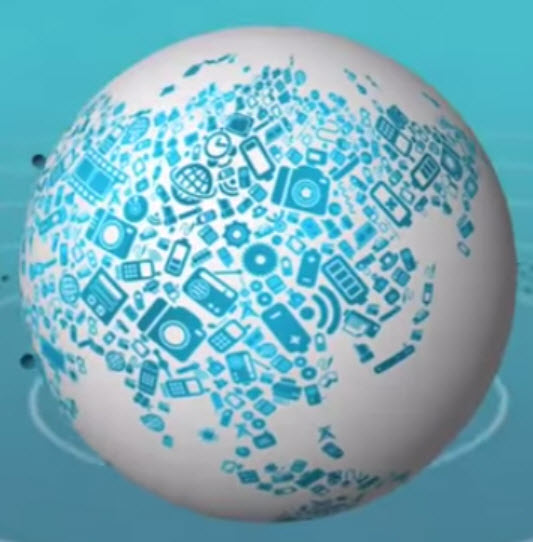The Internet of Things will thrive by 2025 but raise privacy, complexity concerns, experts say
May 15, 2014
The Internet of Things will make substantial inroads into many aspects of everyday life in the next decade, according to predictions by more than 1,600 experts cited in a report (summarized here) about the future of the Internet by the Pew Research Center Internet Project and Elon University’s Imagining the Internet Center.
According to futurist Paul Saffo, managing director of Discern Analytics, most of these devices will be communicating on our behalf — interacting with the physical and virtual worlds more than interacting with us.
“The devices are going to disappear into what we wear and/or carry. For example, the glasses interface will shrink to near-invisibility in conventional glasses. The devices will also become robustly inter-networked. … “The biggest shift is a strong move away from a single do-everything device to multiple devices with overlapping functions and, above all, an inter-relationship with our other devices.”
Survey respondents expect the Internet of Things to be evident in many places, including:
- Bodies: Many people will wear devices that let them connect to the Internet and will give them feedback on their activities, health and fitness. They will also monitor others (their children or employees, for instance) who are also wearing sensors, or moving in and out of places that have sensors.
- Homes: People will be able to control nearly everything remotely, from how their residences are heated and cooled to how often their gardens are watered. Homes will also have sensors that warn about everything from prowlers to broken water pipes, although we have some of that now with online services.
- Communities: Embedded devices and smartphone apps will enable more efficient transportation and give readouts on pollution levels. “Smart systems” might deliver electricity and water more efficiently and warn about infrastructure problems.
- Goods and services: Factories and supply chains will have sensors and readers that more precisely track materials to speed up and smooth out the manufacture and distribution of goods.
- Environment: There will be real-time readings from fields, forests, oceans, and cities about pollution levels, soil moisture, and resource extraction that allow for closer monitoring of problems.
“These experts say the next digital revolution is the expanding and often-invisible spread of the Internet of Things,” noted Janna Anderson, director of the Imagining the Internet Center and a co-author of the report. “They expect positive change that will impact health, transportation, shopping, industrial production and the environment. But they also warn about the privacy implications of this new data-saturated world and about the complexities involved in making networked devices work together.”
There will also be complicated, unintended consequences: “We will live in a world where many things won’t work and nobody will know how to fix them.”
